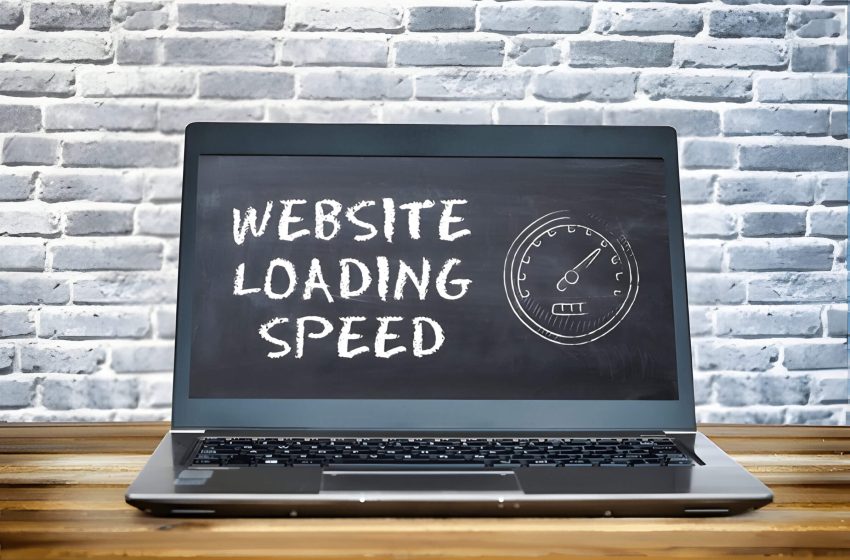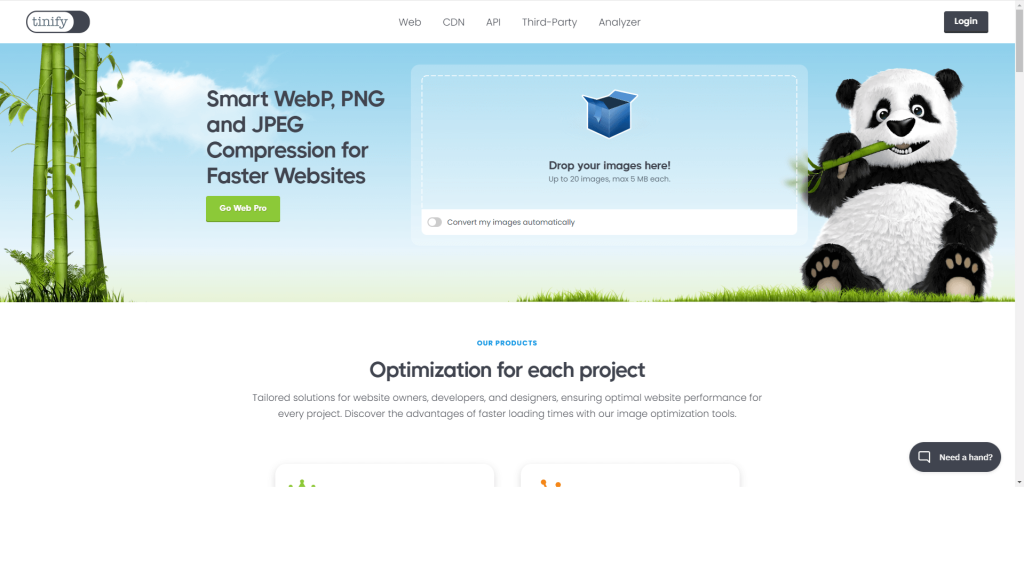How to Optimize Website Speed for Better User Experience and SEO

Website speed is crucial for online success, enhancing user experience and search engine rankings. This article examines techniques to optimize site speed, including image compression and content delivery networks. Implementing these strategies can improve performance, increasing user engagement and search visibility.
Understanding the Importance of Website Speed
Website speed is a critical factor in determining the success of your online presence. A fast-loading website not only enhances user experience but also plays a significant role in search engine optimization. Page load time directly impacts how visitors perceive your site, with slower websites often leading to higher bounce rates as users become frustrated and leave before engaging with your content.
Search engines, particularly Google, consider website performance as a ranking factor. Faster websites are more likely to appear higher in search results, potentially increasing organic traffic. Moreover, a speedy website contributes to better user engagement, longer session durations, and improved conversion rates.
Measuring Your Website’s Current Speed
To improve your website’s speed, you first need to establish a baseline by measuring its current performance. Several reliable website speed test tools can provide valuable insights into your site’s loading times and overall performance. Here are some popular options:
PageSpeed Insights: Developed by Google, this tool analyzes your website’s content and generates suggestions to make your pages faster on both mobile and desktop devices. It provides a performance score and detailed recommendations for improvement.
GTmetrix: This comprehensive tool offers a detailed analysis of your website’s speed, including page load time, total page size, and the number of requests. It also provides actionable recommendations to enhance performance.
WebPageTest: This open-source tool allows you to run speed tests from multiple locations worldwide, simulating various network conditions. It provides waterfall charts, video analysis, and content breakdown to help identify performance bottlenecks.
When using these tools, pay attention to key performance metrics such as:
- First Contentful Paint (FCP)
- Time to Interactive (TTI)
- Largest Contentful Paint (LCP)
- Cumulative Layout Shift (CLS)
By regularly testing your website’s speed and monitoring these metrics, you can track improvements and identify areas that require further optimization. Remember that different tools may provide slightly varying results, so it’s best to use multiple tools for a comprehensive understanding of your website’s performance.
Optimizing Images for Faster Loading

Optimizing images is crucial for improving website performance and user experience. One effective technique is image compression, which reduces file size without significantly compromising quality. Lazy loading is another powerful strategy, where images are loaded only as they enter the viewport, reducing initial page load time.
Implementing responsive images ensures that the appropriate image size is served based on the user’s device, preventing unnecessary data transfer. The WebP format, supported by most modern browsers, offers superior compression and quality compared to traditional formats like JPEG and PNG.
Various image optimization tools are available to streamline the process, such as TinyPNG, Squoosh, and ImageOptim. These tools can automatically compress images, convert formats, and even generate responsive image sets.
By combining these techniques and utilizing optimization tools, website owners can significantly reduce page load times, improve SEO rankings, and enhance overall user satisfaction.
Leveraging Browser Caching and Content Delivery Networks (CDNs)
Browser caching and Content Delivery Networks (CDNs) are powerful tools for improving website performance and user experience. Browser caching allows frequently accessed resources to be stored locally on a user’s device, reducing load times for repeat visitors. To implement effective browser caching, utilize cache-control and expires headers in your server configuration. These headers instruct browsers on how long to retain specific resources before requesting updates.
CDNs further enhance content delivery by distributing your website’s static assets across a global network of servers. This approach minimizes latency by serving content from locations geographically closer to users. When implementing a CDN, consider factors such as your target audience’s location and the types of content you’re distributing. Popular CDN providers offer easy integration options and customizable content distribution rules.
By leveraging both browser caching and CDNs, you can significantly reduce server load, improve page load times, and provide a smoother browsing experience for users across different regions. Regular monitoring and optimization of these techniques ensure your website maintains peak performance as your content and user base grow.
Minifying and Compressing Website Resources
Minifying and compressing website resources is a crucial step in optimizing website performance. CSS minification involves removing unnecessary whitespace, comments, and formatting from stylesheets, reducing file size without affecting functionality. Similarly, JavaScript minification strips out comments, whitespace, and shortens variable names to create a more compact script.
HTML compression works by removing excess characters and optimizing the structure of the markup. This process can significantly reduce the overall size of web pages, leading to faster load times.
GZIP compression is another powerful technique that can be applied to various file types, including HTML, CSS, and JavaScript. It works by compressing files on the server before sending them to the user’s browser, which then decompresses and renders the content.
File optimization extends beyond just minification and compression. It includes strategies like combining multiple CSS or JavaScript files into single files, using efficient image formats, and leveraging browser caching.
By implementing these optimization techniques, website owners can dramatically improve page load speeds, enhance user experience, and potentially boost search engine rankings, as site speed is a known factor in SEO algorithms.
Reducing Server Response Time
Reducing Server Response Time is crucial for improving website performance and user experience. One of the key metrics to focus on is Time to First Byte (TTFB), which measures how long it takes for a server to respond to a browser request. To optimize server response time, start by evaluating your hosting provider and considering upgrading to a more robust solution if necessary.
Server optimization techniques can significantly impact response times. Implement server-side caching to store frequently accessed data, reducing the need for repeated database queries. Database optimization is equally important; ensure your queries are efficient, tables are properly indexed, and unnecessary data is regularly purged.
Additionally, consider using a content delivery network (CDN) to distribute your website’s static content across multiple servers globally. This can help reduce the load on your primary server and improve response times for users in different geographical locations.
Regular monitoring and performance testing are essential to identify bottlenecks and areas for improvement. By focusing on these server optimization strategies, you can significantly reduce response times and enhance overall website performance.
Implementing Asynchronous Loading for CSS and JavaScript
Implementing asynchronous loading for CSS and JavaScript is a crucial step in optimizing website speed. By reducing render-blocking resources, you can significantly improve your site’s loading time and overall performance.
For CSS, start by identifying your critical styles – those necessary for rendering above-the-fold content. Inline these styles directly in the HTML to ensure immediate rendering. Then, load the remaining CSS asynchronously using techniques like loadCSS or by adding a preload link with an onload attribute.
When it comes to JavaScript, utilize the defer attribute for scripts that aren’t essential for initial rendering. This tells the browser to download the script but wait to execute it until after the HTML is parsed. For scripts that need to load immediately but don’t affect rendering, use the async attribute.
Another effective strategy is to split your JavaScript into smaller chunks and load them on-demand. This technique, known as code splitting, ensures that users only download the code necessary for their current page or interaction.
Remember to minify and compress your CSS and JavaScript files to further reduce file sizes. By implementing these asynchronous loading techniques, you’ll create a faster, more responsive website that provides a better user experience and potentially improves search engine rankings.
Mobile Optimization Techniques for Faster Loading
Mobile optimization is crucial for ensuring fast loading times and a seamless user experience on smartphones and tablets. To achieve optimal mobile performance, consider implementing these key techniques:
1. Mobile-first design: Prioritize mobile layouts and functionality during the development process, ensuring that your website is inherently optimized for smaller screens.
2. Responsive web design: Create flexible layouts that adapt to various screen sizes and orientations, eliminating the need for separate mobile and desktop versions.
3. AMP (Accelerated Mobile Pages): Implement AMP to create lightweight, stripped-down versions of your web pages that load almost instantly on mobile devices.
4. Mobile caching: Utilize browser and server-side caching to store frequently accessed data, reducing load times for returning visitors.
5. Image optimization: Compress images and use modern formats like WebP to reduce file sizes without compromising quality.
6. Minification: Minimize CSS, JavaScript, and HTML files to reduce their size and improve loading speeds.
7. Lazy loading: Implement lazy loading for images and videos to prioritize above-the-fold content and defer the loading of off-screen elements.
8. Content Delivery Networks (CDNs): Use CDNs to distribute your website’s static assets across multiple servers, reducing latency for users in different geographic locations.
By incorporating these mobile-specific optimizations, you can significantly improve your website’s loading speed on mobile devices, leading to better user engagement and improved search engine rankings.
Maintaining and Monitoring Website Speed for Long-term Success
Maintaining and monitoring your website’s speed is an ongoing process that requires consistent attention and effort. Regular performance checks, updates, and optimizations are essential to ensure your site continues to deliver a fast, seamless user experience. By implementing the strategies discussed in this article and staying vigilant about your website’s performance, you can maintain a competitive edge in the digital landscape.
Remember that user expectations and technology are constantly evolving, so what’s considered “fast” today may be perceived as slow tomorrow. Stay informed about the latest web performance best practices and emerging technologies to keep your website ahead of the curve.